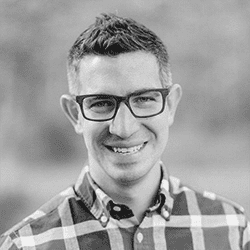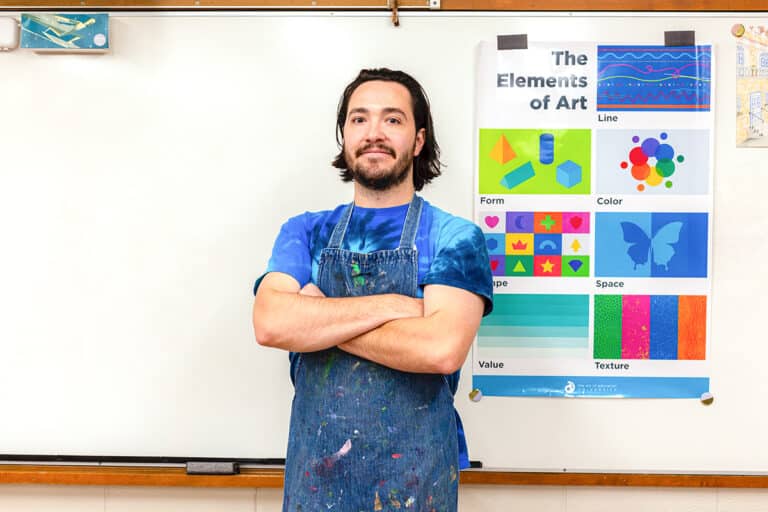#WhyYouMatter is a public art campaign empowering students to love and appreciate themselves and others while fostering a positive school climate where all people feel safe, supported, and valued.
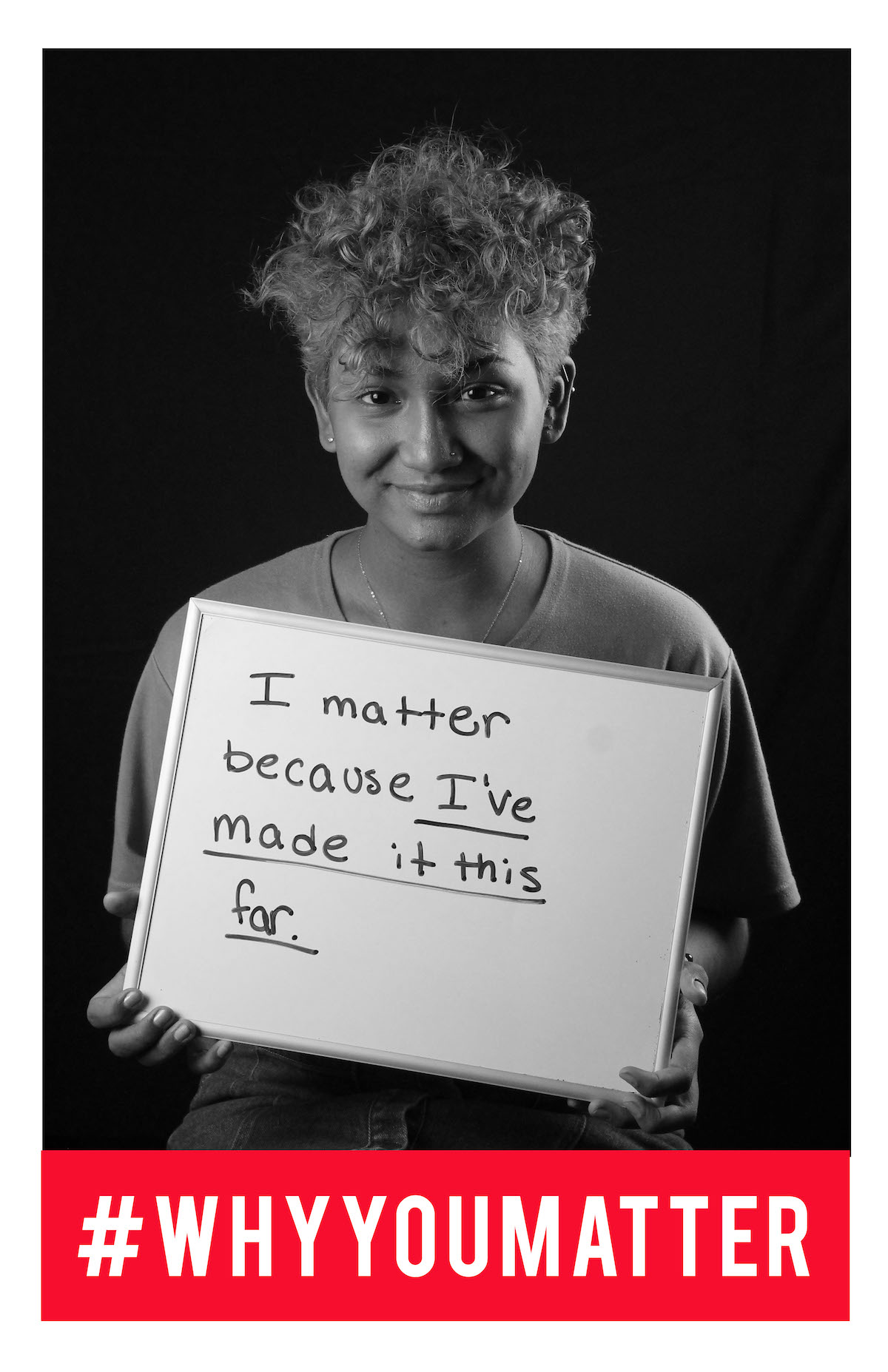
The campaign was started by Georgina Rutherford and Laura Naar, art teachers at Chelsea High School, a suburban public school outside Ann Arbor, Michigan. Laura continues to teach art at Chelsea High School, while Georgina is currently pursuing an MFA at the University of Wisconson-Milwaukee and continues to play an integral part in the campaign. The two share the impetus for their creative campaign and what continues to drive them to develop new concepts each year.
What inspired the two of you to initiate the #WhyYouMatter campaign at your school?
During the summer of 2016, we lost two students to suicide and another to a tragic car accident. Coming back into the new school year, we felt the school’s universal loss. As art teachers, we didn’t know how to help a grieving school, so we decided to do what we do best: make art.
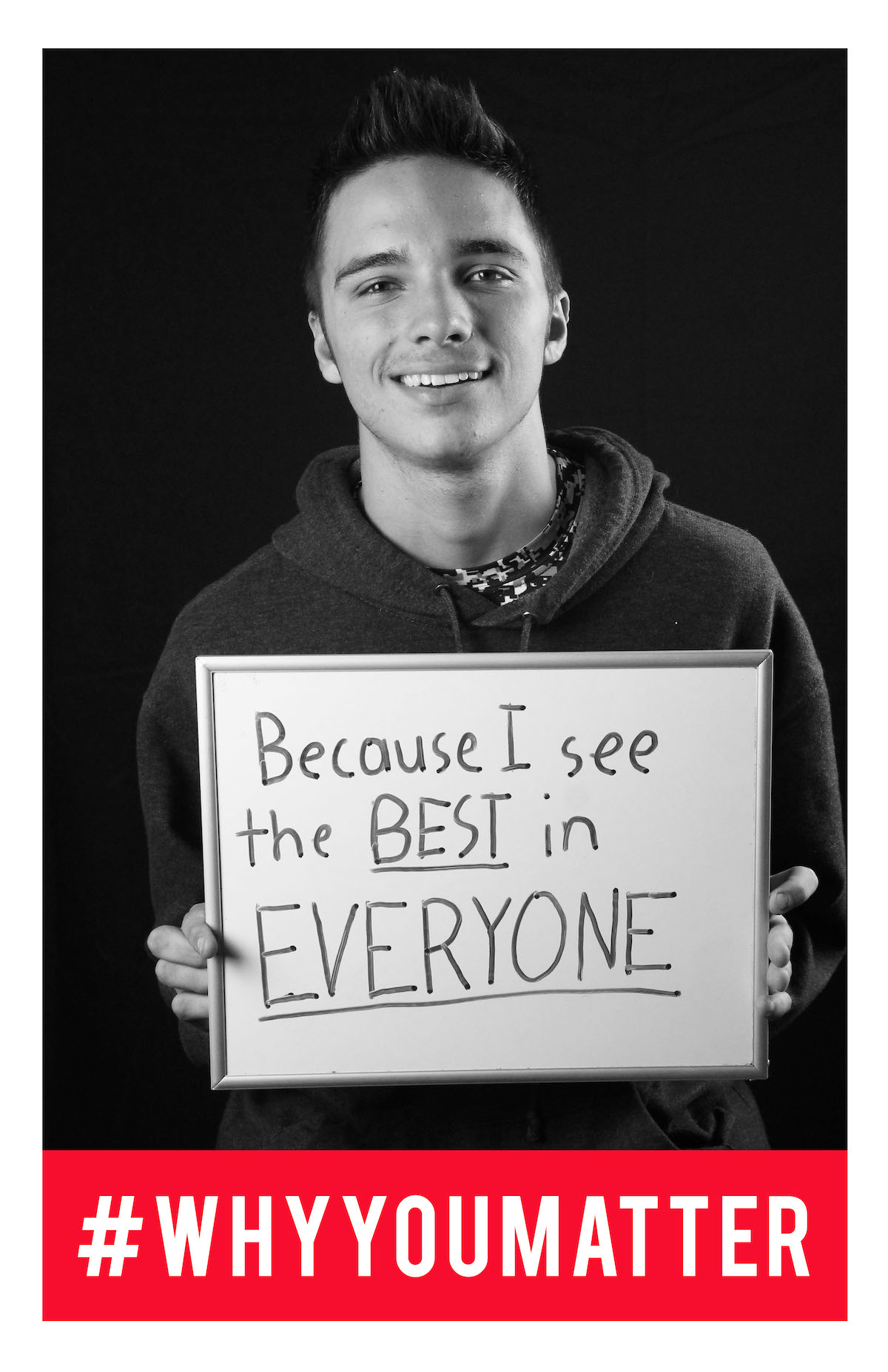
And they did. The two art teachers led the entire school through a project where students were asked to consider “why they matter.” Their thoughts were distilled into simple yet powerful statements written on dry-erase boards held by the student as they were photographed by student artists. Every single person involved with Chelsea High School was photographed, and the images were displayed around the school. Students and staff were confronted with the visuals and the notion that they do matter and have a purpose.
It’s more than just photographs. How has the campaign taken on a new life each new year?
With this campaign, our goal is to do a school-wide art project with our students every year. We start by selecting a theme to focus on, such as “why do you matter,” “what is your why,” “what’s your common thread,” and “I wish you knew.” The first year was the “why you matter” photographs, but we’ve also done prayer flags, a string mural, and a postcard project.
During our second year, we started to pair our art projects with a speaker series inspired by short educational Ted Talks. Students nominated speakers who were prompted by the year’s theme to speak to the whole school for no more than eight minutes. Speakers were teachers in the district, administrators, alumni, and sometimes current students. Overall, we designed these programs to be a framework for the school to start conversations on mental wellness and self-acceptance and for students to be involved in a school-wide project together.
How did you get “buy-in” from the other educators in your school?
With each new year, we pitch our idea during a staff meeting and ask for the staff’s thoughts and ideas. We make sure they are comfortable with the theme of the year. Without our staff on board, we would never be able to do what we do. We then ask every staff member in our building: teachers, secretaries, custodians, food service, etc., to participate in our project along with our students. The campaign has helped these adults just as much as the kids. Sometimes we all need a little self-love and reflection.
There is often a misconception about teenagers and their level of confidence and self-awareness. How have you seen this play out with your campaign?
Teenagers live in kind of a fishbowl. They know how many Instagram followers they have and their score on the SAT, but many of them struggle with appreciating themselves and their unique qualities. They are very aware of what is happening within their own worlds but don’t always understand that other teenagers are going through similar experiences. As a result, they can often find themselves feeling alone or inadequate.
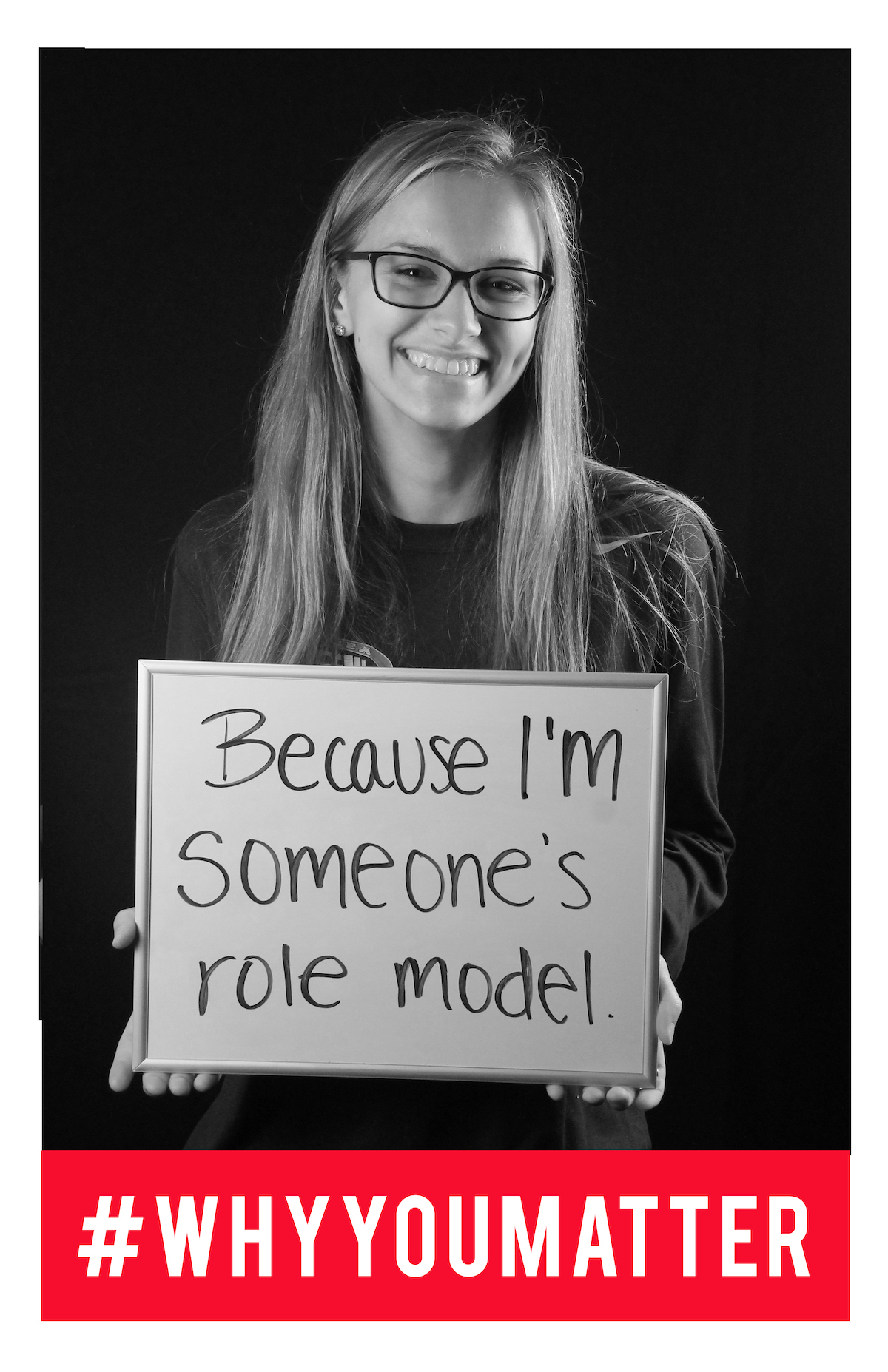
It has been very eye-opening to see them connect, through this project, to peers near and far who feel the same way they do. Asking them to really examine their own priorities and unique characteristics from a place of love and appreciation helps them take ownership of who they are in a positive way.
What impact have you seen at your school as a result of this project? What types of conversations are on-going?
#WhyYouMatter has become part of our school culture. For example, when the tradition of homecoming queen came up for discussion during a student council meeting a few years ago, the students put the idea up against what we preach in #WhyYouMatter. Did it make all students feel safe and valued? Did it make all students feel seen and heard? The students determined that it didn’t, so they opted to change it.
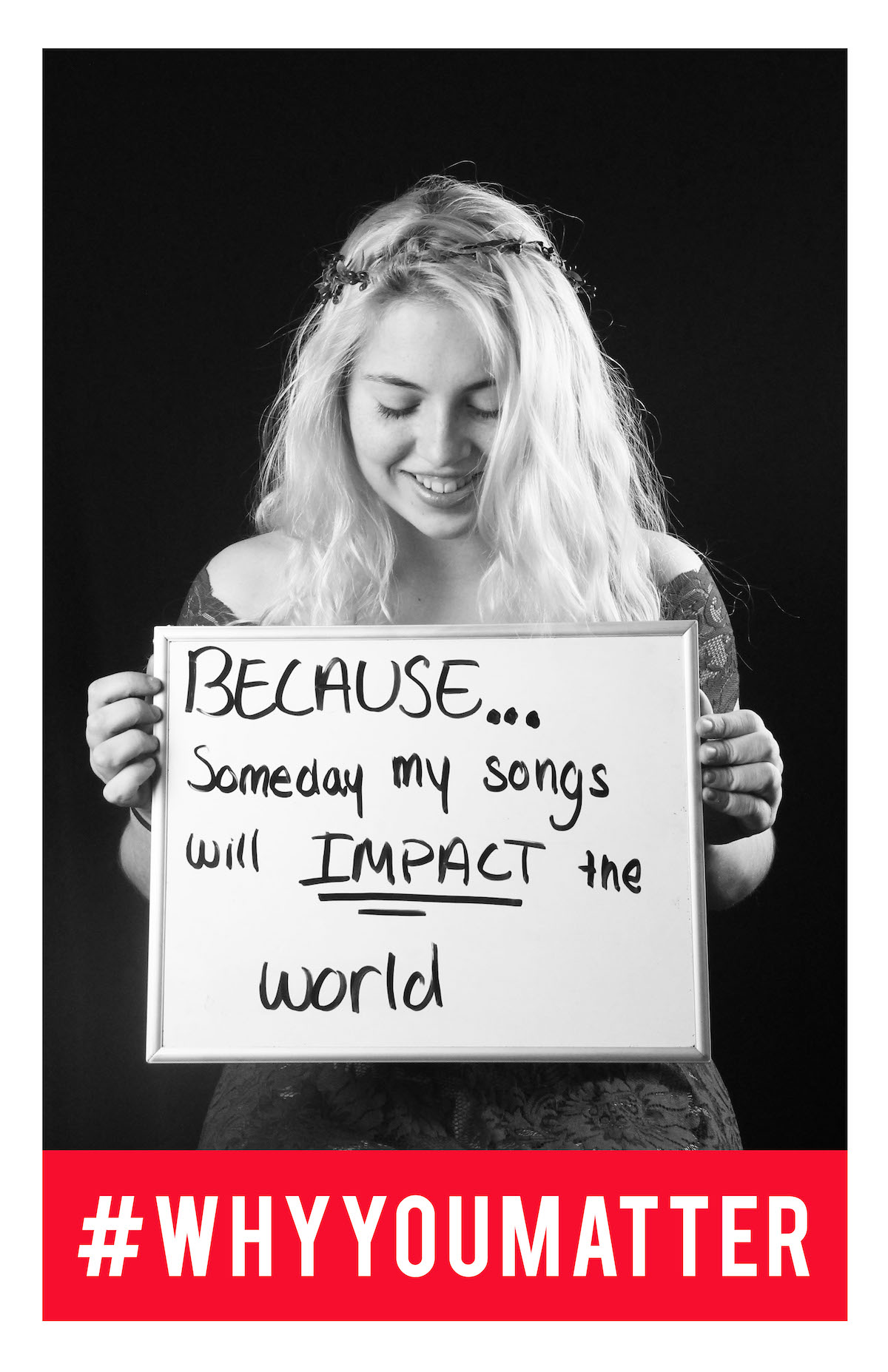
Students look forward to the program every year. The coolest part is they know they will be involved in the process. The project’s entire premise is to start with conversations in the classroom, no matter how difficult. We no longer push difficult topics under the rug. We have created a platform where we hope kids feel more comfortable talking with teachers and their peers because it has become the school norm.
What can you say about the broader impact of this initiative? Because #WhyYouMatter is most definitely spreading.
It is sometimes overwhelming to think about the impact. We created the website because we thought if this project could help our school, maybe it could help other schools going through the same thing. Our website and our campaign went viral, and schools started to pick up on the project. Very quickly, we were being asked to speak at conventions, such as the National Art Education Association conference in both Seattle and Boston, as well as several speaking engagements in our home state of Michigan.
The best part has been working with so many teachers to get the project going in their schools. Each teacher has their own twist for the project that works for their school community, and we learn something new from each and every one. Our campaign has been replicated all over the country and internationally. It is really amazing to think about all of the people impacted by the program.
A teacher wants to make this project happen at their school… how do they even get started?
Part of our vision with this campaign was to be able to easily share it with other schools so they could emulate the process. Everything is available on our website, whyyoumatter.org.
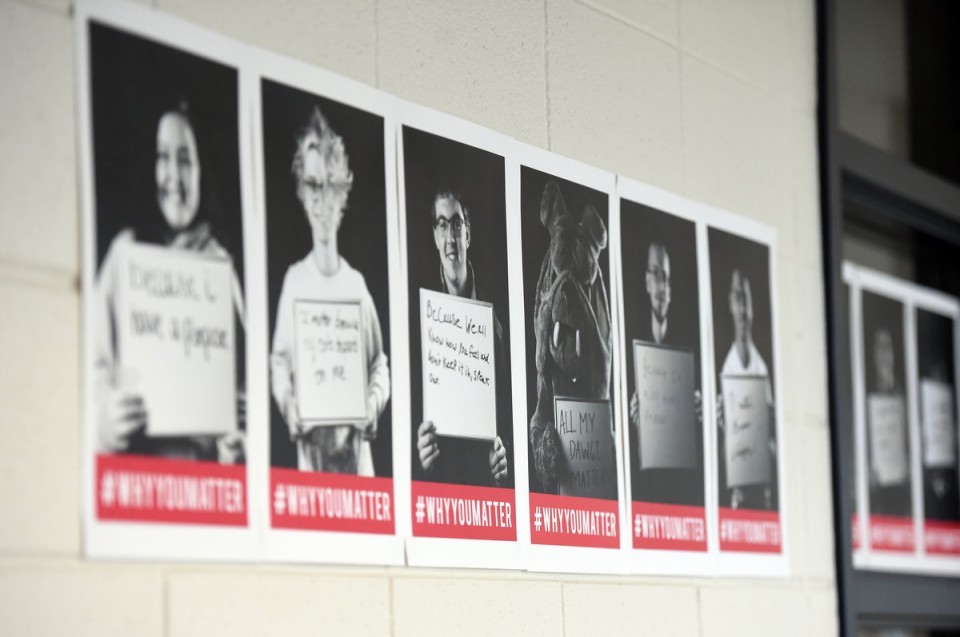
Each year of the campaign has a dedicated page to share “how we did it,” where we provided a narrative of our experience along with lesson plans, supplies, organizational hacks, and grant information. We also have open communication with teachers interested in pursuing these projects through our email: whyyoumatter@gmail.com.
Engaging students in positive conversations around self-worth and fostering a positive school climate have never been more important. Empowering students to love and appreciate themselves and others while involving the entire educational community can help you promote both in your school. A public art campaign like #WhyYouMatter might be the key to spread these important messages.
Consider, as an art educator, why do you matter?
How can you spark conversations about self-awareness within your curriculum?
Who in your school community would collaborate and brainstorm school-wide projects with you?
Magazine articles and podcasts are opinions of professional education contributors and do not necessarily represent the position of the Art of Education University (AOEU) or its academic offerings. Contributors use terms in the way they are most often talked about in the scope of their educational experiences.

